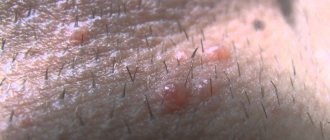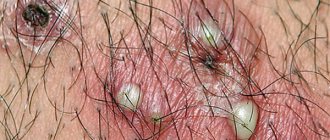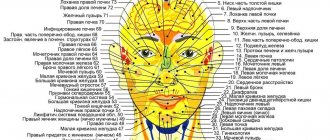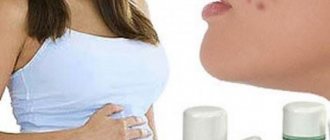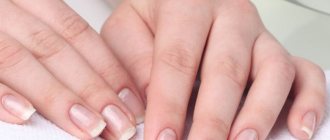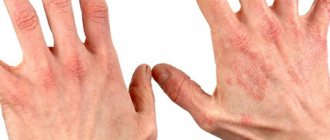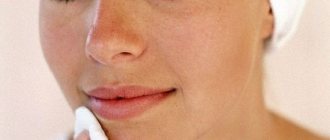A wart is basically a benign growth on the skin of the human body. As a rule, such formations have a viral etiology. They look like a nodule or papilla emerging on the skin, causing special physical and cosmetic discomfort in the neck area.
The growths are very contagious and spread quickly not only throughout the host’s body, but are also easily transmitted to people in direct contact with him, especially sexually, and non-contactly through water in a pool, in a bathhouse, in everyday life through a shared towel and personal hygiene items.
What are warts
A wart is a skin disease that appears as small raised lesions about 10 millimeters in size. Less often - large size.
They do not differ in color from skin, but are brown and red. The shape of the neoplasm resembles a nodule with or without a stalk. The number of warts is not limited, as is the location.
Initially, they do not pose a threat to health, but they look very unaesthetic. Their appearance affects the appearance of the neck and is accompanied by discomfort that occurs when it comes into contact with clothing.
On this topic
- Warts
All about removing warts with nitrogen
- Inna Viktorovna Zhikhoreva
- September 27, 2020
Due to this, the warts are subject to friction. This provokes inflammation and pain, which leads to the need to remove them.
Attempts to cover them with clothing aggravate the situation, as they lead to injury, bleeding, and change in shape. It is not safe. After all, the appearance of warts is not only a cosmetic defect, but also a threat of development of a benign formation into a more dangerous type of disease - oncology.
To avoid unwanted consequences, you need to find out what factors contribute to the appearance of warts.
Traditional methods of getting rid of HPV
We will not consider all existing methods, there are too many of them, but we will consider the most popular and effective ones.
You can quickly remove it using potato juice
It is advisable to carry out treatment in July - November, since in winter a toxic substance - solanine - accumulates in the vegetable, which can cause poisoning. Potatoes use red varieties:
- grate the tubers and squeeze the juice through several layers of gauze or use a juicer, the main condition is to manipulate the vegetable before direct consumption;
- every morning, half an hour before meals, drink 100 ml of the resulting liquid for 2-3 months.
Important!
In severe forms of diabetes, gastritis with low acidity or obesity, treatment with potato juice is prohibited.
Garlic ointment
- peel 1-3 cloves of garlic;
- finely chop with a knife or pass through a garlic press;
- mix the resulting slurry with petroleum jelly or baby cream in a 1:2 ratio, respectively;
- treat the skin around the growth with vegetable oil or fatty cream, apply the garlic mixture pointwise to the papilloma and fix it for 5-6 hours with a piece of bandage and adhesive plaster;
- After the time has passed, remove the compress and rinse the skin with warm water.
The method helps to remove the tumor within 2 months. If severe burning or itching occurs during the procedure, remove the mixture and rinse the skin.
Onions and onion skins
- chop a quarter of the peeled onion and add a teaspoon of table vinegar (9%) to the mixture, mix all ingredients;
- apply the mixture to the affected area for 15 minutes, securing it with a bandage and pre-lubricating adjacent areas of skin with oil;
- remove the compress, rinse your neck with water. Carry out the procedure within 14 days.
Onion peels give good results in the treatment of papilloma:
- take a glass or ceramic container (the walls should be made of a material that is not subject to oxidation), fill it with washed and dried onion peels;
- pour table vinegar into the same bowl to the top, cover tightly with parchment paper or cloth, leave for 2 weeks in a dark place;
- remove the husk, dry it and place it in 2-3 layers on the papilloma. Keep the compress on for 8–10 hours; after removing, be sure to lubricate the skin with a rich cream.
Banana peels
Cut the peel into pieces and apply the inside to the area where the papilloma appears for 10–30 days. This method is safe for the skin, so the bandage can be left overnight.
How to remove HPV using Kalanchoe?
Rub the juice from freshly cut young leaves of the plant into the areas of growths 2 times a day without rinsing. Treatment is carried out until the papilloma disappears, the first results are visible on the 3-4th day after the start of the procedures. You can also apply a bandage with cotton wool soaked in juice at night.
REFERENCE! Healing qualities are characteristic of Kalanchoe pinnate. To ensure maximum effect from the procedures, stop watering the plant 10 days before cutting the leaves.
Tincture of violet, wormwood and plantain
- take wormwood herb, tricolor violet herb and plantain leaves in a ratio of 1:1:3, respectively;
- Bring the water to a boil and immediately pour in the collection. The amount of liquid required in relation to the volume of dry herbs should be 7:1;
- cover the container with gauze or a loose cloth and leave for 24 hours in a dark place;
- strain and take 1 tablespoon 3 times a day, before meals.
Using egg white
- release the egg into a small container;
- Soak a cotton swab in the protein that remains on the walls of the shell and lubricate the growths 5-7 times a day.
The course of treatment is 14–20 days. REFERENCE! The method is effective in removing small papilloma.
Dandelion
Using the plant, you can get rid of neoplasms in two ways:
- external influence. Fill a glass jar tightly with freshly picked yellow flowers and fill them to the top with triple cologne. Leave the container for 14 days, away from sunlight. Pour the liquid into a dark glass container and store in a cool place. Lubricate papillomas 5–7 times a day until they disappear completely;
- Pour 200 ml of boiling water over a tablespoon of dry dandelion grass and leave to steep for 60 minutes. Strain the broth and add boiled water so that you get the original volume. Take the infusion 3-4 times a day, divided into portions, 30 minutes before meals, for 10-14 days.
Important!
Taking the decoction orally is prohibited in the presence of pathologies of the biliary tract, peptic ulcer, or gastritis.
Tea tree oil and lemon oil
- soak a cotton swab in tea tree essential oil and apply to the tumor. Perform the procedure 2 times a day until the growth disappears (7–10 days);
- Use lemon oil undiluted. Before use, lubricate adjacent tissues with cream, soak a cotton swab in the preparation and apply to the papilloma for 10 minutes. Repeat the skin treatment 4 times a day.
Laundry soap
It is convenient to perform the procedure before bedtime. The removal method involves applying several layers of soap (70% or 72%) to the localized growth areas.
To avoid injury to the neoplasm, the skin must be moisturized. After 4 sessions, redness and slight itching should be observed. You cannot tear off papillomas yourself or remove a dried crust.
Important!
The use of folk remedies is possible only after prior consultation with a doctor.
Causes
In most cases, warts indicate the presence of the human papillomavirus in the patient's body. The insidiousness of the disease is that its presence does not manifest itself for a long time.
More than 80% of the population are carriers of HPV, but not everyone develops new growths in the form of warts. This is explained by the state of the body's defenses, as well as individual predisposition.
Some of the most important causes of warts are:
- weakened immunity due to previous infectious and colds;
- avitaminosis;
- anemia;
- diabetes ;
- violation of metabolic processes;
- hormonal changes during menopause, pregnancy.
On this topic
- Warts
All about the radio wave method of wart removal
- Inna Viktorovna Zhikhoreva
- September 27, 2020
The list can continue with a number of diseases associated with disruption of the gastrointestinal tract, endocrine and genitourinary systems.
There are other factors that contribute to the activation of the virus and the appearance of numerous warts. Among them:
- excessive sun exposure ;
- overwork;
- nervous breakdowns;
- taking antibiotics, hormonal or antibacterial drugs;
- failure to comply with hygiene rules;
- contact with infected person.
In addition, warts appear at the site of microcracks, scratches, abrasions, which become open gates for the penetration of the virus.
Being a viral disease, warts are easily transmitted through household means - through household items.
Risk group
Papilloma is not always associated with a viral origin. Patients at risk are those who:
- over 50 years of age (this is due to a slowdown in metabolic processes in the body);
- undergoing chemotherapy;
- abuse alcohol and smoking;
- live a promiscuous sex life.
Hereditary predisposition, pregnancy or breastfeeding play an important role.
Pharmacy drugs without a doctor's prescription
For you, we have prepared an excerpt from the most popular pharmaceutical drugs for the treatment of HPV.
Papinol
A complex preparation based on herbal components, which allows not only to get rid of cosmetic skin defects, but also has a strengthening effect on the immune system, preventing infection with papillomavirus:
- Dilute 1 capsule in 100 ml of clean water and take once a day 30–40 minutes before meals;
- simultaneously with oral administration, treat the affected skin with ointment 2-3 times a day.
lapis pencil
The drug is in the form of a hard pencil with a rounded top, grayish-white or white, containing silver nitrate. Apply the product directly to the location of the papilloma 1-2 times a day until the growths disappear.
Super clean
Contrary to the name, the solution does not contain plant components and consists of sodium hydroxide (alkali), soda and salt. The use of the drug can cause severe burns and requires strict adherence to the instructions:
- carefully treat the location of the growths with cream, including the papillomas themselves;
- make a slit in the adhesive plaster and glue it so that the hole coincides with the tumor;
- Apply a drop of the drug using a pipette, making sure that the liquid does not spread onto adjacent tissues;
- wait until the solution dries and remove the patch.
The course of treatment is 5 days, during which time the papilloma will turn black.
Types of warts
The appearance of warts is not accompanied by significant symptoms. Initially, you can notice small spots on the skin, slightly different in color from the main skin.
The formed growths are of two types.
Flat
They can be round, oval or multifaceted. They protrude slightly above the surface of the skin (up to 2 mm). The volume reaches 2-5 mm. They are localized on the arms, legs, scalp, and less commonly on the neck. Formed singly or in groups. They differ in the possibility of new daughter growths growing directly on them. This makes their surface lumpy.
Hanging
At first it is a small knot on a thread-leg. As it grows, it looks like a tiny mushroom or flesh-colored nipple. The length of such warts ranges from 1 to 6 mm.
Their appearance does not bother a person, but causes discomfort when in contact with clothing. Most often, patients try to get rid of these papillomas for aesthetic reasons.
The absence of pain should not be a reason to ignore the appearance of warts of any kind, especially if their number is rapidly increasing. Such manifestations are a signal for examination of papillomas.
Small warts on the neck
Most often, hanging small skin growths are localized in one place. They may additionally appear due to mechanical effects on the skin in the collar area (rubbing with clothing, shaving, scratching the painful area). Small formations, usually multiple, have a smooth surface covered with scales. Their color is slightly yellowish or matches the color of their skin.
A woman’s neck disfigured by tubercles does not look very aesthetically pleasing. It is necessary to take action immediately from the moment the first, even small, uncomfortable growth appears on the neck.
Possible complications
The biggest danger posed by the appearance of warts is the possibility of their transformation from a harmless form to a malignant one.
Benign neoplasms are not dangerous. But their localization in the neck area leads to the possibility of irritation and inflammation. This becomes a prerequisite for their infection and the appearance of new growths.
Elderly people perceive this pathological process as a natural sign of age-related changes. This position can lead to irreversible consequences.
If warts appear in the neck area, it is advisable to consult a specialist to determine its nature in order to exclude the possibility of papilloma degeneration.
On this topic
- Warts
All about laser wart removal
- Inna Viktorovna Zhikhoreva
- September 27, 2020
If it is not possible to be examined in the near future, it is necessary to constantly monitor her. But if the shape, color or size of the wart changes, or if it is damaged, it is unacceptable to postpone a visit to the doctor.
Warts are dangerous not only for their owner, but also for others, as they are a source of infection for healthy people.
Healing after removal of small warts
After removing small warts, the wounds heal very quickly.
In young people, the healing time usually does not exceed 1 week.
After this time, the crust is torn off.
In its place only a pink spot remains.
Over time, the color of young skin is compared with the surrounding skin.
Scars do not form after removal if it was performed correctly.
There are almost no complications after removal.
They are possible only if a person tore off the scab prematurely, soaked it in water for a long time, or the wound was exposed to contamination.
To reduce the risk of infection, your doctor may prescribe treatment with local antibacterial agents.
Diagnostics
To identify the cause of the appearance of numerous warts on the neck and determine the origin of the growths, you need to contact a specialist.
Diagnostic measures include:
- external examination of neoplasms;
- scraping to determine the presence/absence of a virus;
- determination of the type of virus (if any).
In order to exclude the oncological nature of the neoplasm, in some cases material is taken for a biopsy.
The examination results are the basis for prescribing an adequate course of treatment.
Types and symptoms
There are flat, hanging and senile (seborrheic) neoplasms on the neck. Small flat and hanging warts are benign tumors in the form of a small tubercle or ball on a thin stalk of flesh-colored or brownish color. They can be located in groups or singly and with age they gradually increase in size to 5-8 mm in diameter.
Small warts on the neck rarely bother the owner; they do not cause pain or itch, and are only a cosmetic defect. The main danger is the degeneration of papilloma into a low-quality neoplasm, in which the wart becomes inflamed, bleeds, and dramatically changes color and size. In this case, you must immediately consult a doctor.
Senile warts are benign formations and are skin growths covered with a keratinized layer of epithelium.
Treatment methods
There are often cases when people try to remove hanging growths on their own, using traditional methods. They are cauterized with various infusions, herbs, and tied with threads.
Such methods not only do not get rid of the virus, but also pose a threat of infection and transformation of papilloma into a malignant form.
Warts must be treated. This will prevent the possibility of their spread to other parts of the body and protect healthy people from infection. However, only a qualified specialist can choose a treatment method.
Therapeutic treatment
Based on a diagnostic examination, the dermatologist will select the most effective and less gentle ways to eliminate papillomas. In this case, possible contraindications will be taken into account. This:
- inflammatory processes in the body;
- infectious diseases;
- skin irritation
- possible allergic manifestations.
In addition to the wishes of the patient, whose main goal is to eliminate a cosmetic defect, the doctor takes into account the possibility of getting rid of not only the external manifestation of the disease, but also eliminating its root cause.
Small warts can be easily treated with solutions whose main active ingredient is phenol. Ferezol and Verrukacid have proven themselves well.
Good results are achieved by using Salicylic acid, Supercleaner, Salipod patch and lapis pencil.
On this topic
- Warts
How to permanently remove warts on the face
- Inna Viktorovna Zhikhoreva
- September 25, 2020
A more effective remedy is a drug that eliminates growths by freezing their tissues - Cryopharm.
Getting rid of warts involves a comprehensive approach to treatment. For this purpose, drugs are simultaneously prescribed that strengthen the patient’s immune system in combination with antiviral drugs – Anaferon or Viferon. It is also necessary to take a vitamin complex recommended by your doctor.
It must be remembered that self-use of any medications can cause more harm than good. The fact is that they contain chemicals that can cause burns. As a result, this will lead to prolonged healing, as well as the appearance of rough scars and scars.
The most effective methods
Warts can be easily removed using modern technologies, among which are widely used:
- Laser removal. This is a painless method that does not affect adjacent areas of the skin. It is most appropriate for eliminating small papillomas.
- Cryodestruction. The procedure is carried out using liquid nitrogen. The neoplasm cells are frozen. This leads to the gradual death of the wart and the formation of new healthy skin.
- Electrocoagulation. The growth is burned out by electric current. The disadvantage of this method is that after healing, a scar remains.
- Removal using the Surgitron device. Bloodless and painless removal of growth using radio waves.
On this topic
- Warts
All about the causes and treatment of warts on the fingers
- Inna Viktorovna Zhikhoreva
- September 25, 2020
A surgical method is used to remove malignant tumors. After such an operation, scars remain. But in such a situation you don’t have to choose.
The doctor decides which method to choose, taking into account the patient’s wishes, if the patient’s age and concomitant diseases allow it.
Warts on the neck - treatment
In order to quickly and permanently get rid of negative skin benign tumors on the neck, you should strictly use special potent pharmaceutical drugs according to the instructions.
Many patients infected with the virus do not know how to remove tumors from the delicate skin on the neck without leaving a clear trace of the impact. In this case, you just need to strictly follow the recipe and use the medications very carefully so as not to get severe irritation and burns to healthy areas of the skin.
Detailed information on the use of drugs freely sold in pharmacies, the action of which is aimed primarily at removing excess epithelium, is presented below in the lines of the following table.
| Name of the drug | Compound | Action |
| Feresol | Phenol (carbolic acid) and tricresol. | They are a very strong poison. They literally burn and mummify warts and kill fungi. |
| Verrucacid | Phenol (carbolic acid) and metacresol. | |
| Collomak | Salicylic and lactic acid. | Destroy warts and attack fungi. |
| Iodine solution | Iodine. | |
| Panavir | The active substance from potato extract is solanine. | Cauterizes the surface of formations. Solanine, cut from the green part of raw potatoes, has the same healing effect. |
| Cryopharma | Cryopreparation. | Warts are quickly removed using local low freezing (cryotherapy) on a small area affected by a wart, without leaving any marks on the skin after treatment. |
| Wartner cryo | Cryopreparation. | |
| Antitoxin NANO | Ingredients: thistle, rosemary extract, bearberry (bear ears), echinacea extract. | It fights not only warts, but also eradicates their very cause - the virus. |
| Super clean | Contains strong alkalis - oxides of potassium hydroxide and sodium hydroxide. | To remove growths on the feet and heels, as after their use lifelong stains remain. Do not use on delicate neck skin. |
Important! In any case, before using a medicinal product, you must carefully read the instructions for use of the drug so as not to harm your tissues.
The occurrence of any side effects and allergic reactions from the effects of the drugs indicated in the table depends on many factors, including: individual tolerance of the body, gender, age and immunity. Therefore, before you begin to eliminate the painful growths that have appeared on your neck, you must consult a dermatologist.
A specialist will not only determine the type of tumor based on its appearance, but will also perform a dermatoscopy using a modern digital dermatoscope and a scraping from the affected surface, which will be sent for laboratory analysis (histology) to clarify the diagnosis. Having received the results, the doctor will select a well-tolerated, adequate individual treatment for the patient.
Routes of infection
The virus can be transmitted in several ways:
- vertical - from mother to child when passing through the birth canal;
- contact;
- through blood ;
- through household items;
- with hygiene items;
- sexual.
Note! The entry of a virus into the body does not guarantee the appearance of warts. During normal functioning of the immune system, the pathogen may not take root in the host’s body.

